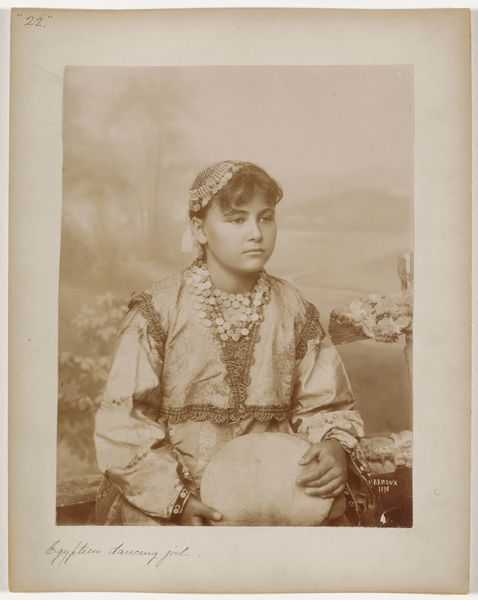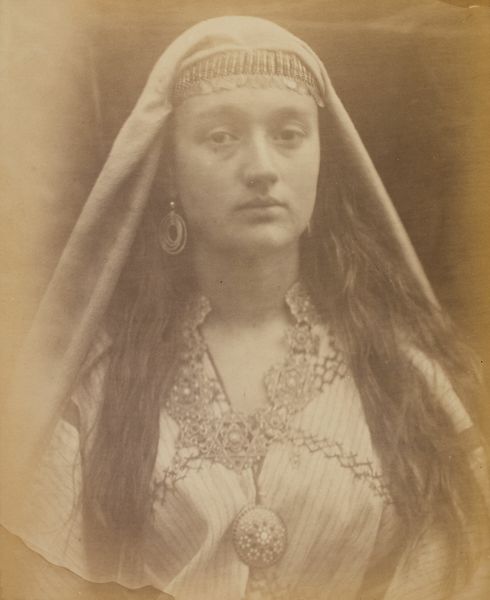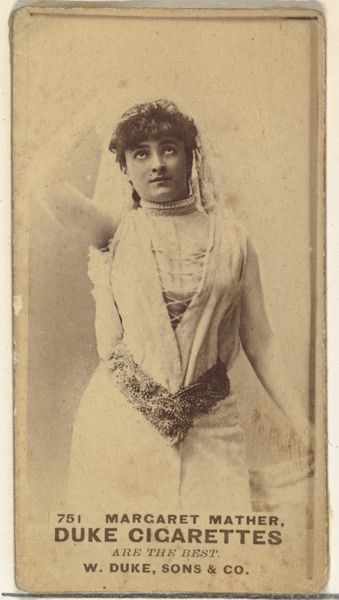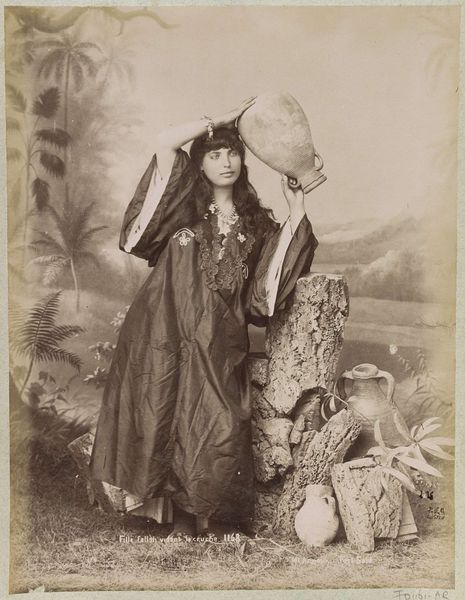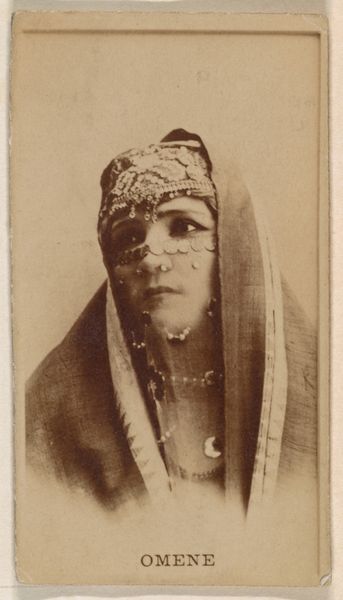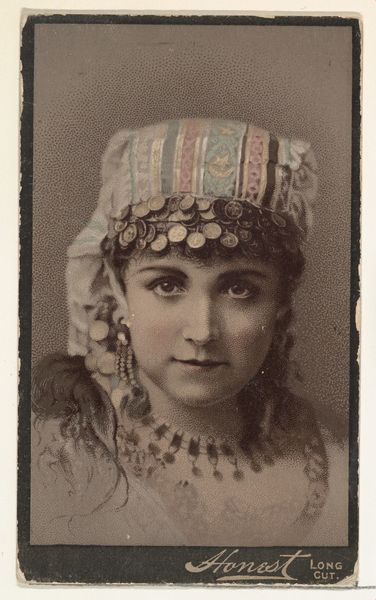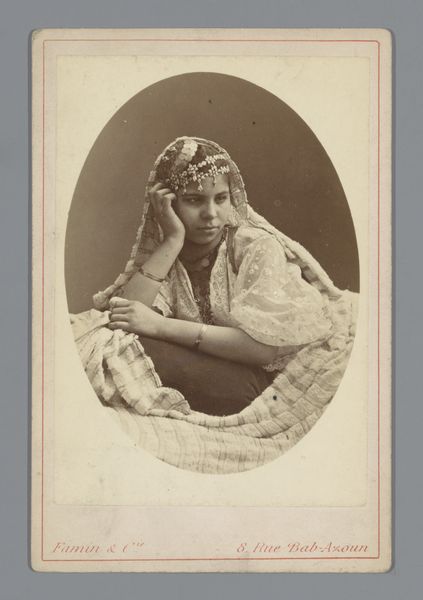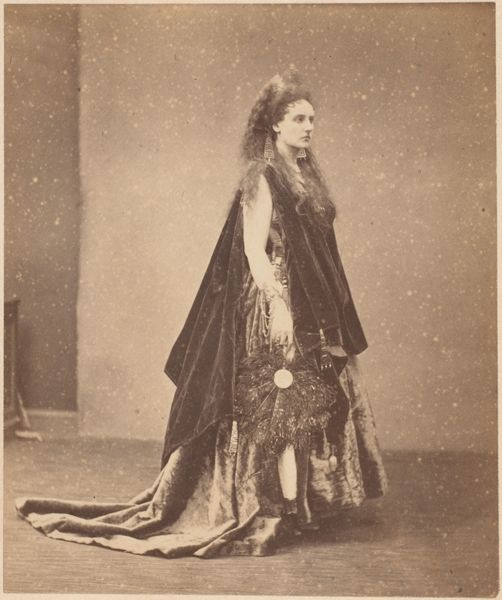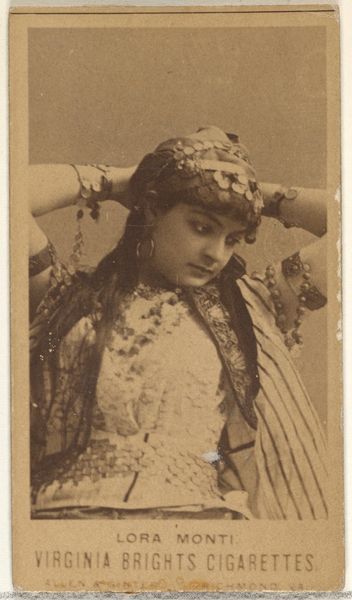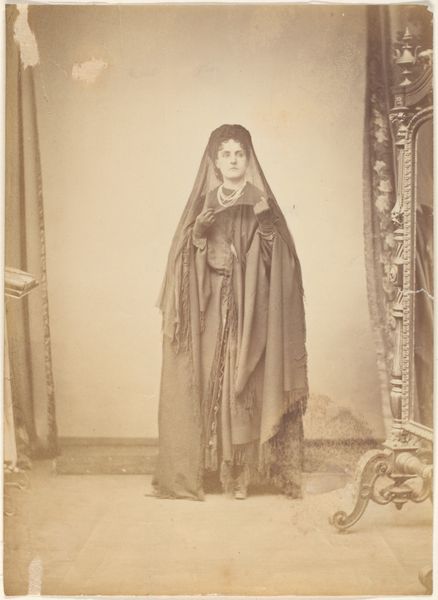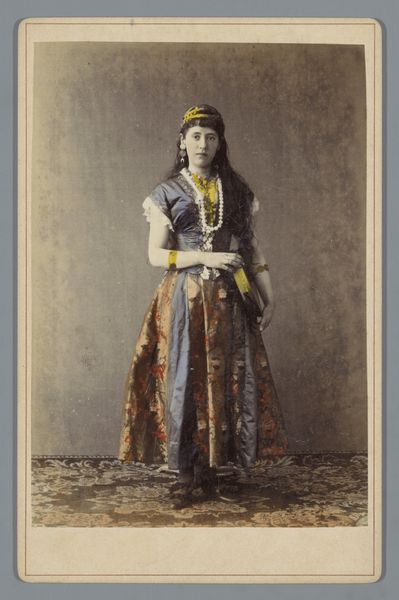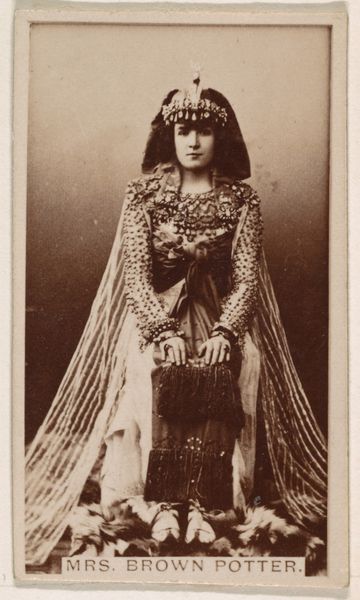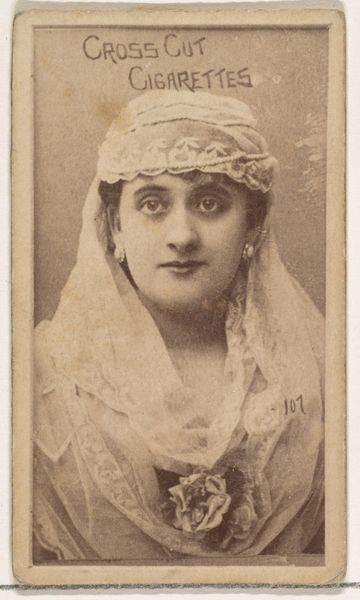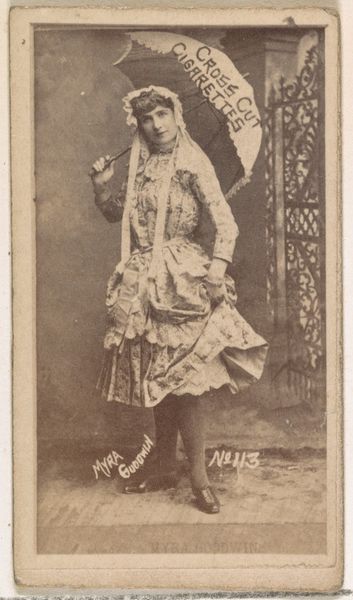
Portret van een Turkse vrouw met tamboerijn in de hand, liggend op een divan c. 1870 - 1891
0:00
0:00
photography
#
photography
#
portrait reference
#
orientalism
#
surrealism
Dimensions: height 199 mm, width 276 mm
Copyright: Rijks Museum: Open Domain
Editor: This albumen print, "Portret van een Turkse vrouw met tamboerijn in de hand, liggend op een divan" by Hippolyte Arnoux, circa 1870 to 1891, strikes me as both alluring and staged. How do you interpret the visual politics at play here? Curator: It’s fascinating how photography became a tool for constructing and circulating fantasies about the "Orient" in the 19th century. The pose, the props – the divan, tambourine, jewelry – they all cater to a Western audience's exoticized expectations of Turkish women and culture. Do you see it reflecting any power dynamics? Editor: I suppose so. The woman’s passive reclining pose reinforces this sense of exotic passivity constructed for a Western gaze. Was Arnoux intentionally perpetuating these stereotypes, or was it simply a product of his time and the prevailing Orientalist trends? Curator: That's a critical question. Arnoux's intent is complex, perhaps a blend of artistic expression and commercial calculation within the bounds of colonialism and the art market of that era. It sold well precisely because it confirmed pre-existing notions and desires of European taste. Notice the details - what seems authentic might be curated, maybe even performed. Editor: So it’s less about accurately representing Turkish culture and more about crafting an image that appealed to the European market. It almost makes you wonder about the agency, or lack thereof, of the woman being photographed. Curator: Precisely! Thinking about it this way unveils how images participate in power structures and colonial narratives. How does viewing the artwork today influence your perspective on its historical and social implications? Editor: It makes me more aware of the dangers of romanticizing other cultures and the need to critically examine the lens through which we view them. I learned so much about visual tropes used at that time! Curator: Likewise! Examining historical representations allows us to acknowledge how such art objects functioned and what sociopolitical conversations are pertinent in the current times.
Comments
No comments
Be the first to comment and join the conversation on the ultimate creative platform.
